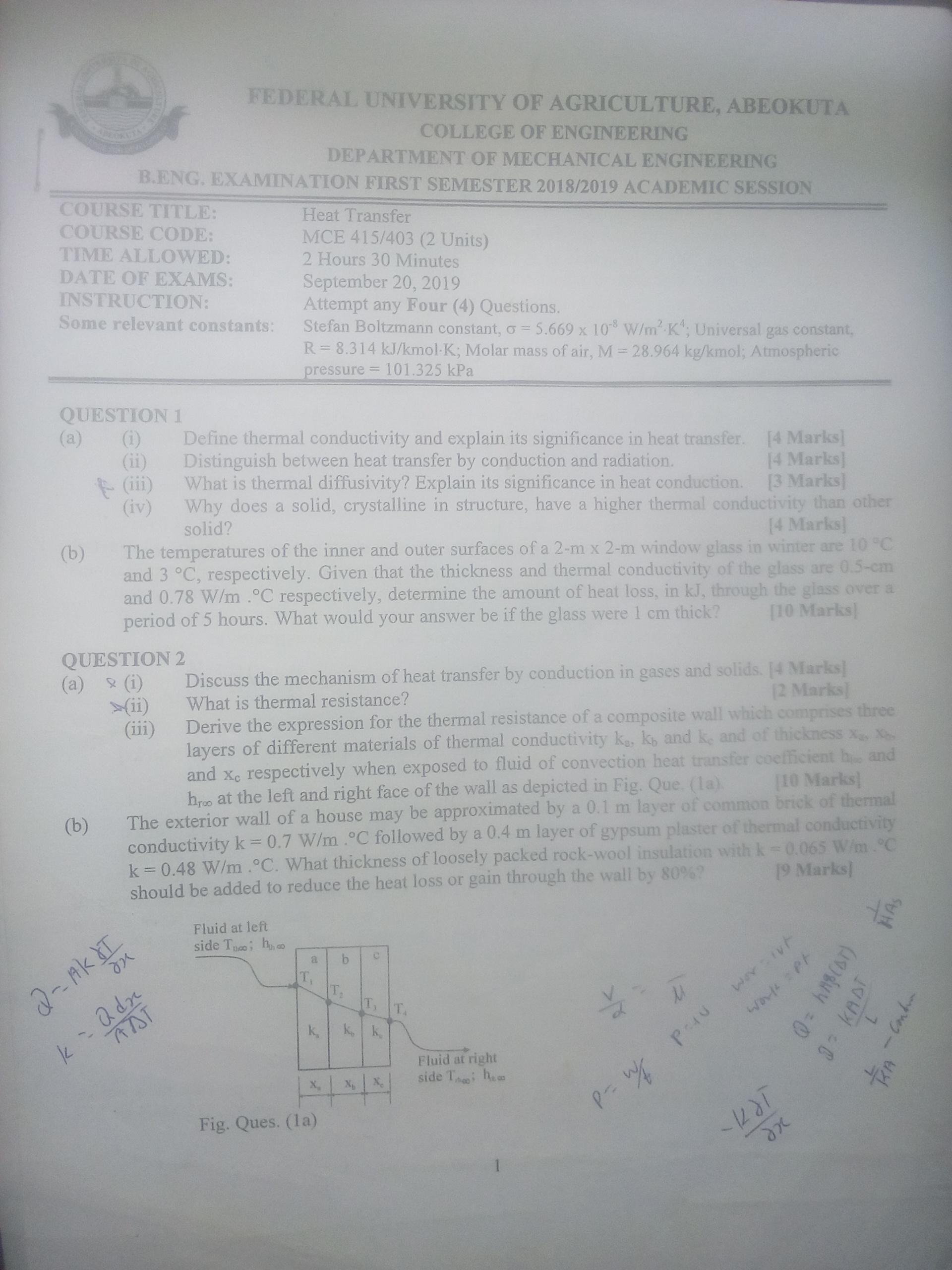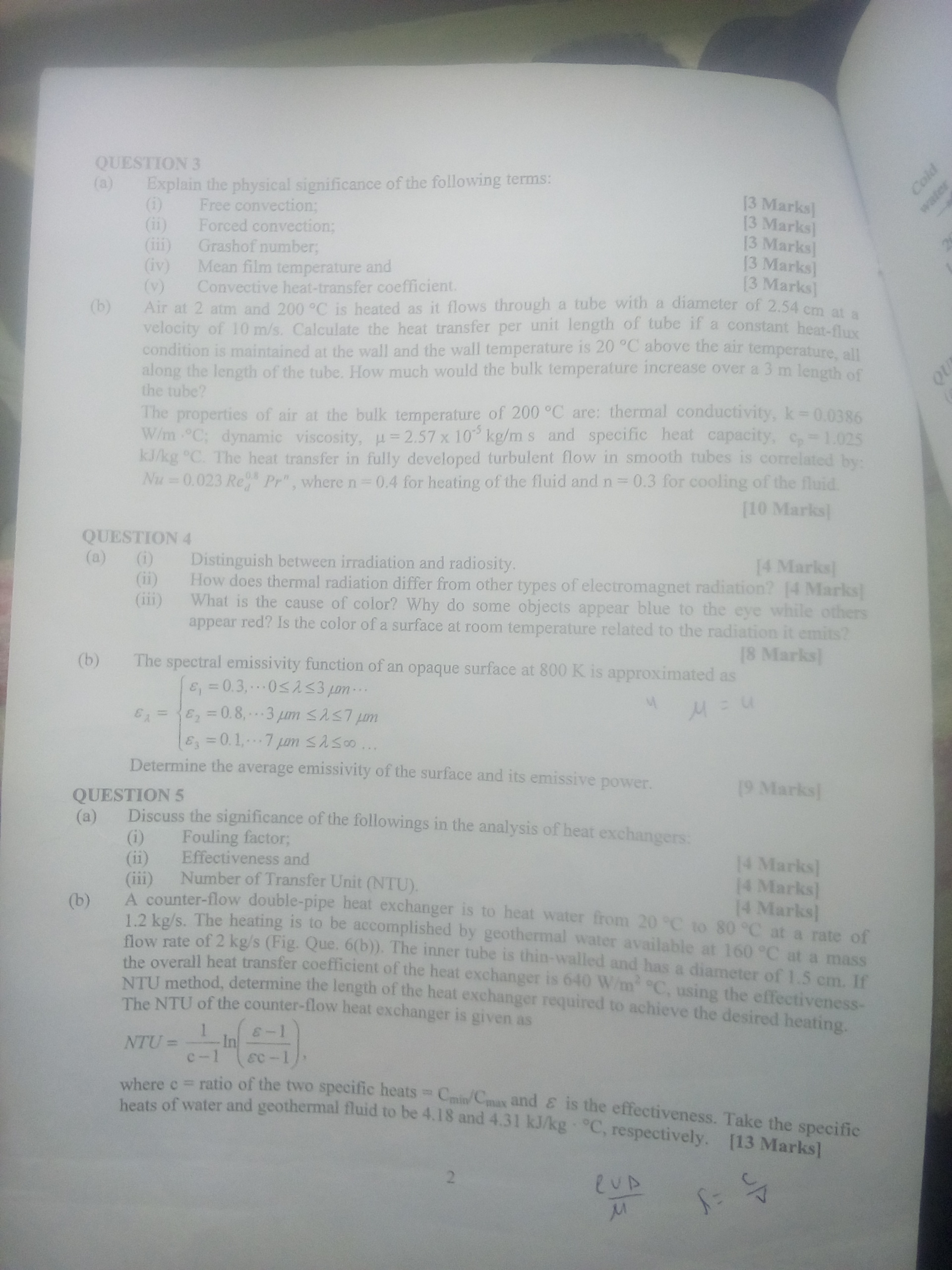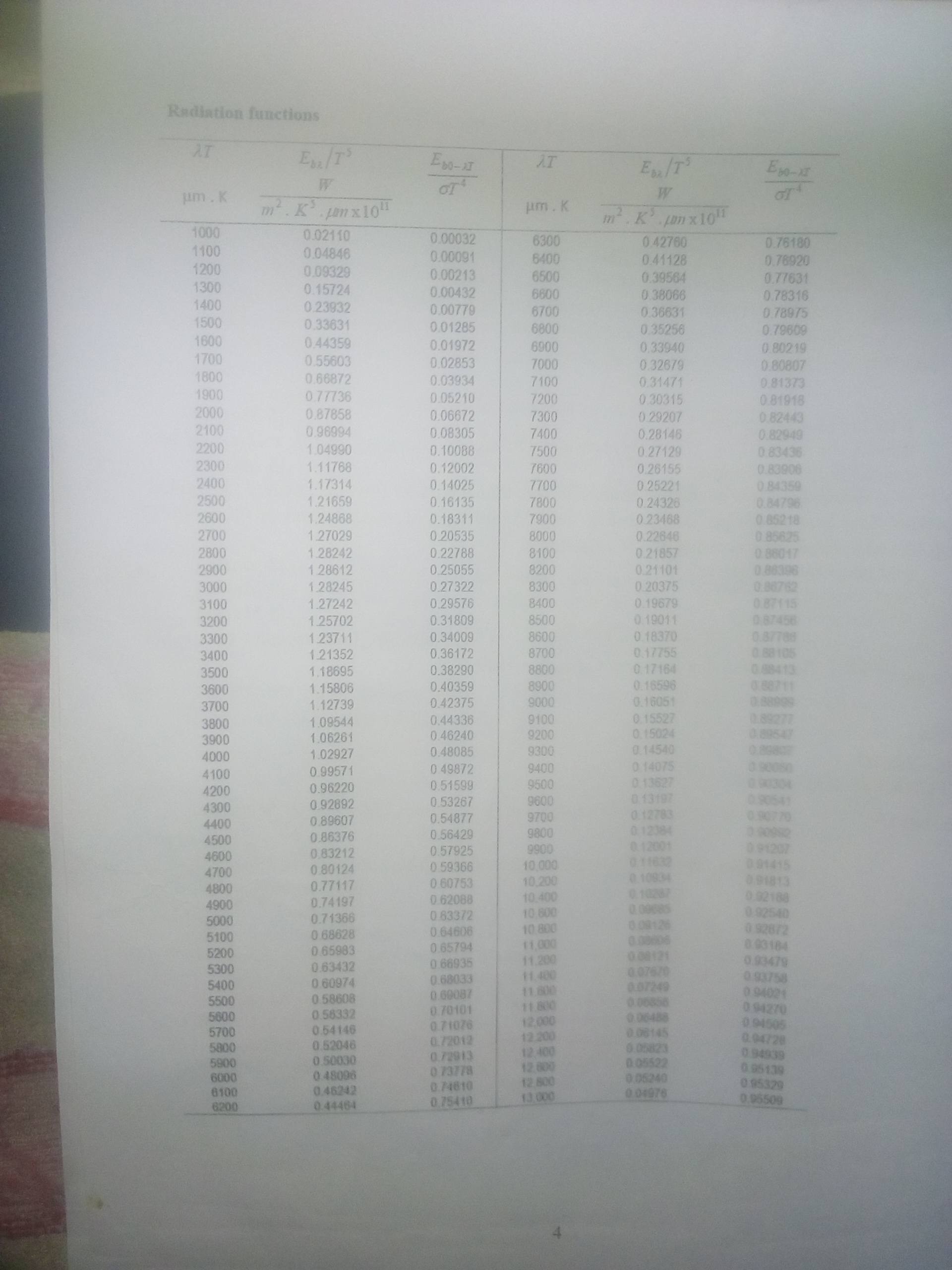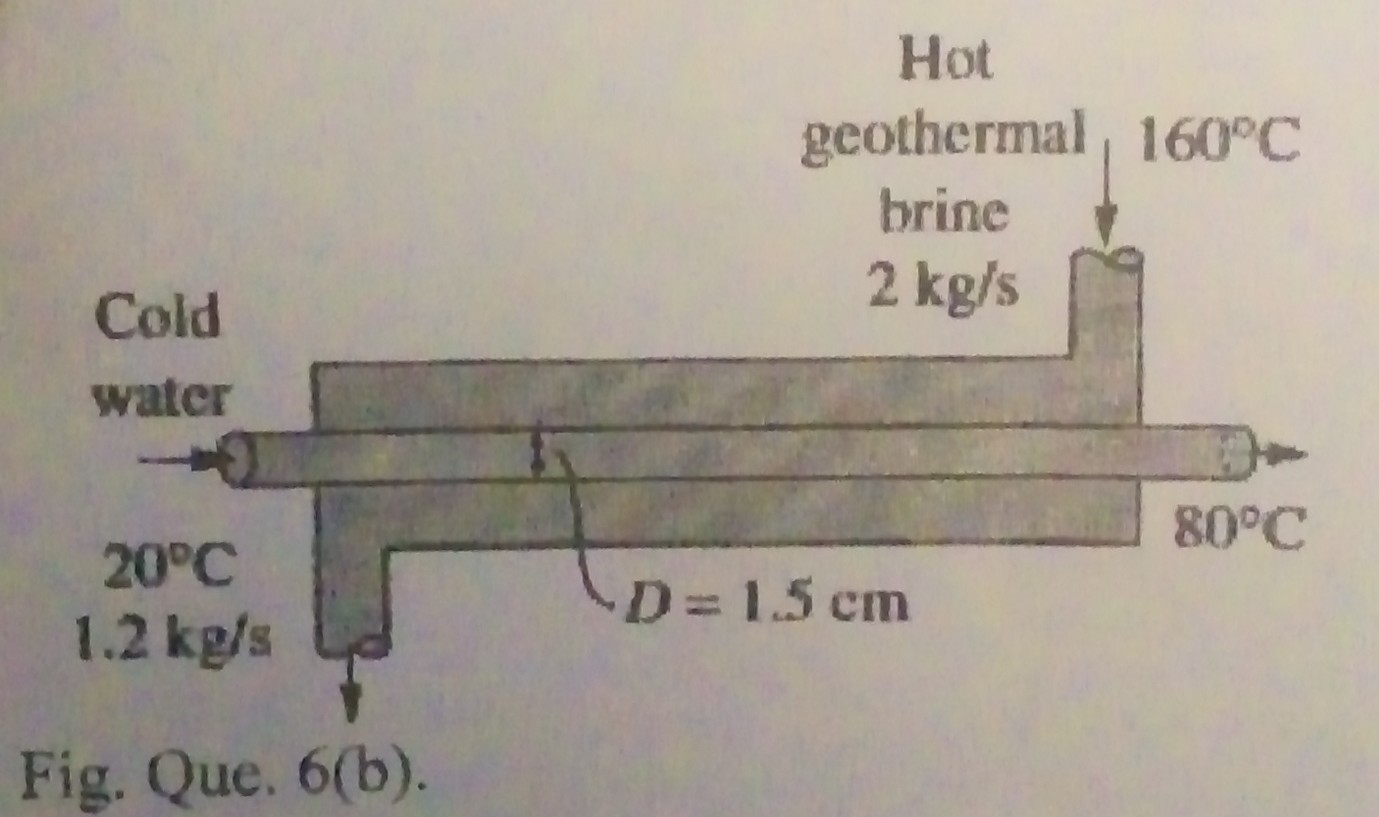



(a)
(i) Define thermal conductivity and explain it's significance in heat transfer
(ii) Distinguish between heat transfer by conduction and radiation
(iii) what is thermal diffusivity? explain it's significance in heat conduction
(iv) Why does a solid, crystalline in structure have higher thermal conductivity than other solids
(b) the temperature of the inner and outer surfaces of a 2-m x 2-m window glass in winter are 10o C and 3 o C respectively. Given that the thickness and thermal conductivity of the glass are 0.5cm and 0.78W/m. o C respectively, determine the amount of heat loss in kj, through the glass over a period of 5 hours. What would your answer be if the glass were 1cm thick.
Question 2
(a)
(I) Discuss the mechanism of heat transfer by conduction in gases and solids.
(II) what is thermal resistance.
(III) Derive the expression for the thermal resistance of a composite wall which comprises three layer of different materials of thermal conductivity ka , kb , kc and of thickness x a , x b , x c respectively when exposed to a fluid of convection heat transfer coefficient h loo and h roo at the left and right face of the wall as depicted in fig.Ques.(1a).
Question 3
(a)
Explain the physical significance of the following terms:
(I) Free convection;
(II) Forced convection;
(III) Grashof number;
(IV) Mean film temperature and
(V) convection heat-transfer coefficient.
(b)
Air at 2 atm and 200 o C is heated as it flows through a tube with a diameter of 2.54 cm at a velocity of 10 m/s. Calculate the heat transfer per unit length of tube if a constant heat-flux condition is maintained at the wall and the wall temperature is 2 0 o C above the air temperature, all along the length of the tube. How much would the bulk temperature increase over a 3m length of the tube?
The properties of air at the bulk temperature of 20 0 o C are: thermal conductivity, k = 0.0386 W/m. 0 o C; dynamic viscosity, u = 2.57 × 10 -5 C kg/m s and specific heat capacity, cp = 1.025kj/kg o C. The heat transfer in fully developed turbulent flow in smooth tubes is correlated by: Nu = 0.023Red 0.8 Pr n , where n = 0.4 for heating of the fluid and n = 0.3 for cooling off the fluid.
Question 4
(a)
(I) Distinguish between irradiation and radiosity.
(II) How does thermal radiation differ from other types of electromagnetic radiation?
(II) What is the cause of color? Why do some objects appear blue to the eye while others appear red? Is the color of a surface at room temperature related to the radiation it emits?
(b) The spectral emissivity function of an opaque surface at 800 K is approximated as

Determine the average emissivity of the surface and its emissive power
Question 5
(a)
Discuss the significance of the followings in the analysis of heat exchangers:
(I) Fouling factor;
(II) Effectiveness and
(III) Number of Transfer Unit (NTU).
(b)
A counter-flow double pipe heat exchanger is to heat water from 20 o C to 8 0 o C at a rate of 1.2kg/s. The heating is to be accomplished by geothermal water available at 160 o C at a mass flow rate of 2 kg/s (Fig.Que.6(b)). The inner tube is thin walled and has a diameter of 1.5 cm. If the overall heat transfer coefficient of the heat exchanger is 640 W/m 2 . o C, using the effectiveness NTU method, determine the length of the heat exchanger required to achieve the desired heating.
The NTU of the counter-flow heat exchanger is given as

Where c = ratio of the two specific heats = Cmin / Cmax and E is the effectiveness. Take the specific heats of water and geothermal fluid to be 4.18 and 4.31kj/kg. o C respectively.

Question 6
(a)
(I) What are heat exchangers?
(II) Why is the use of Log Mean Temperature Difference necessary in the analysis of heat transfer in heat exchanger?
(III) Why is a counter flow exchanger more effective than a parallel flow exchanger?
(b) A parallel flow heat exchanger is required to cool 55,000 kg/h of alcohol from 66 o C to 40 o C using 40,000 kg/h of water entering at 5 o C. Calculate:
(I) exit temperature of water;
(II) heat transfer rate and
(III) surface area required.
The overall heat transfer coefficient U= 580W/m 2 . o C, the specific heat capacity of alcohol C p (alcohol) = 3760j/kg.K and that for water C p (water) = 4180j/kg. o C
...